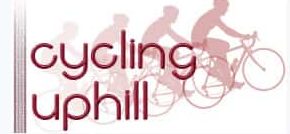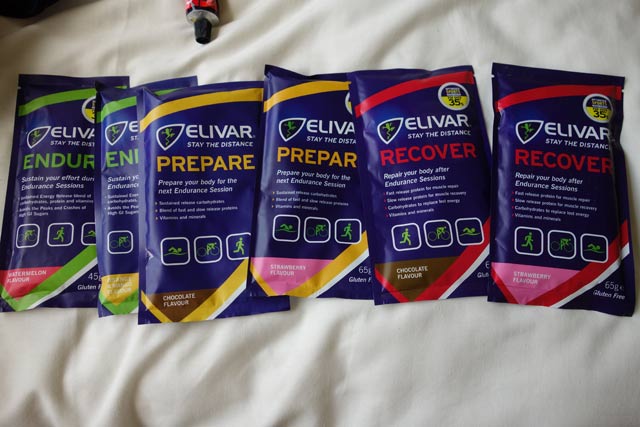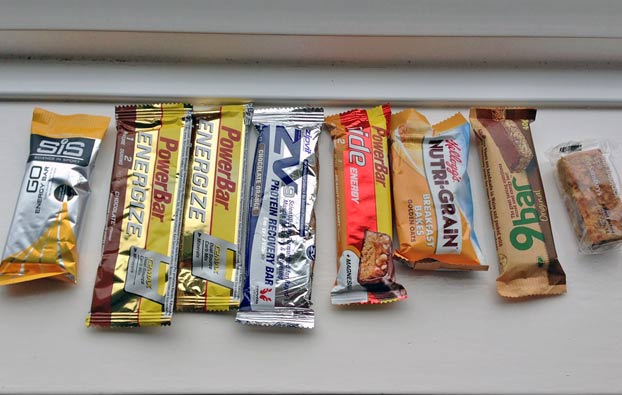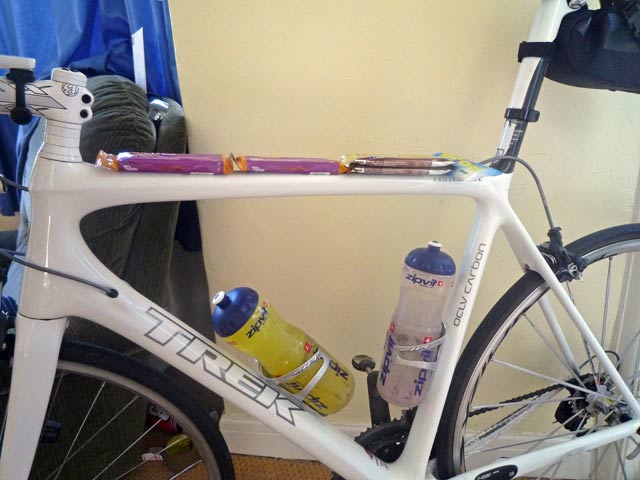Cycling in the heat can be challenging, especially if you are not used to it. When cycling in the heat you have to be careful to remain hydrated, plus taking on enough water and salts. In the UK, we rarely get the opportunity to ride in really hot conditions, which is probably why we struggle a bit more than continentals who are more used to it. Even when it goes above 25 degrees is can feel hard work. But, if we go to Europe or US, it can be even more challenging with temperatures of 35 degrees plus.
The good news is that cycling is one of the better sports to do in the heat. At least you get a cooling effect from the wind – something you don’t get so much when running.
Heat in the Tour de France
On the BBC, there’s a good article by Geraint Thomas on riding in the Tour de France with temperatures nudging 35 degrees +
Thomas writes that:
“I had been drinking around three bottles of fluid every hour – 1.5 litres – to keep myself hydrated and to ride at that threshold. (BBC link)
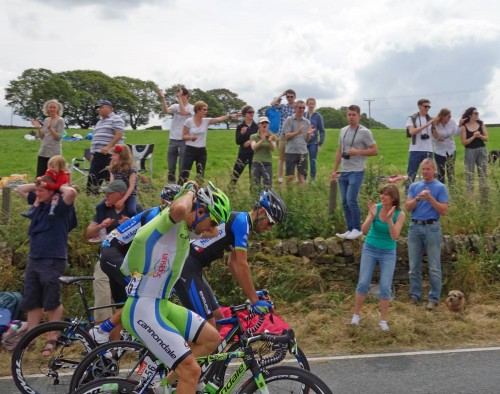
For a six hour stages, that’s 18 bottles or 9 litres. That’s tough for whoever is on water bottle carrying duty that day.
Even with all that water, Thomas says his head felt as if it was going to explode. It’s one thing to ride in the heat, it’s another thing to ride at threshold in the heat. Thomas says he got used to the heat a bit, riding in the Tour down Under. But, even a professional with the best possible backup and experience, still finds it really tough; that’s an element of riding in the heat – it is always going to be a bit harder.
Tips for riding in the heat
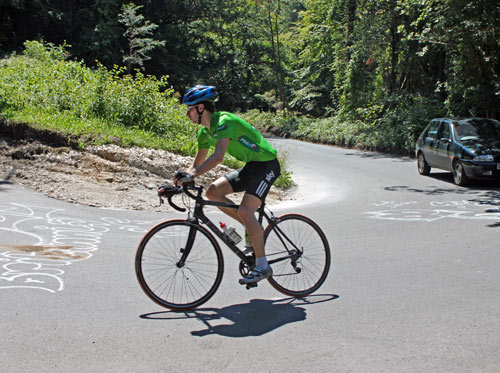
- The need for water can increase dramatically. Once the temperature goes above a certain level, you can need much more than usual. It’s not necessarily a linear progression The danger is that you just take the usual amount, plus a bit more. Thomas writes that he was getting three bottles an hour. Just to emphasise – that is really a lot. But, the amount you need is quite an individual thing. To put it bluntly some people sweat more than others.
- Consider increasing your water carrying capacity. In winter, you can get away with one or two bottle cages, but if you need to be drinking 2 bottles an hour, it can become a real pain, having to keep stopping. For a pro, like Thomas it’s much easier when you have a team car and people to pass you water. For a lone, unsupported rider, it’s a bit more of a pain to keep stopping. If you’re going to be riding a lot in the heat, consider 1000ml bottles (I use this 1L SIS water bottle – good on down tube, but gets in way on the seat tube) or an additional rear mounted bottle cage, so you don’t have to stop so much.
- Electrolytes. When you’re drinking extra quantities of water, you need to take water with electrolytes in. If you just take plain water, you can deplete your salt levels and this can create real problems. A litre of sweat can contain up to about 800 mg of sodium (depending on person) – that’s 50% of recommended intake of sodium (link). I like to take some small packets of electrolytes in back pocket, to put in bottles when I fill up.
- Reduce concentration of energy drinks. When it’s really hot, your stomach will not appreciate highly concentrated energy drinks. As you will be drinking more you can afford to reduce the concentration of energy powder and you will still get enough carbohydrate.
- Getting the right quantity of water and electrolytes is not so easy. It’s hard to give precise quantities because everyone will be different depending on their weight, effort levels, propensity to sweat e.t.c. One very rough rule of thumb is to check quantity / colour of urine. You will notice on very hot days, you need to work harder drinking extra water to keep urine normal colour.
- It is also useful to weigh yourself before and after a ride, you can easily lose a couple of kilos during a ride. However, don’t feel you have to keep the same weight after the ride, it is inevitable your weight goes down a little after a ride (even when it’s freezing), but if it is more than normal, it is a sign of excess water loss.
- One thing about riding in the heat is that it requires a certain discipline and focus to keep drinking and taking on energy. If you’re not careful, you can just suffer and not take on enough. Often it is only when you stop, that you realise how thirsty you are.
- Just because it’s hot in the valley, doesn’t mean it is hot everywhere. If you’re climbing mountains or even big hills it can still be a lot cooler high up. A good rain jacket can help protect should the weather change.
- With riding in the heat, there is an element of acclimatisation. If you go from a cold British winter to 35 degrees in Australia, it’s quite a shock to the system. The longer you spend riding in the heat, the better you will get. The body can change the way it sweats and it becomes more tolerable over time. Therefore, if possible give yourself time to adjust to the heat.
- There is a psychological element to riding in the heat. I’ve heard many British people say quite strongly “I hate the heat” – “I’m useless in the heat”. I do think this makes it even more difficult. Certainly some people will find it harder in the heat, but try and avoid being too pessimistic. Even if you’ve had a bad experience riding in the heat, there is probably quite a lot you can do to make it better next time – acclimatisation, drinking more, and gaining more confidence to riding in the heat. Don’t write off you ability to ride in the heat. See it as a challenge – something to get used to, like you train to get faster, you need to train to get used to the heat.
- It is possible to drink too much. It can cause a condition known as hyponatremia – when you take so much water, cells become depleted in sodium. The phenomena has been observed most in slow marathon runners, who took a long time, and drank too much at every water station. There is an element of common sense. You don’t have to down litres of water before starting – this will just make you want to stop.
- Caffeine. There seems to be conflicting research, some studies suggest caffeine can act as a diuretic and increase chance of dehydration. Others negate this. But, I avoid anyway.
Read more
